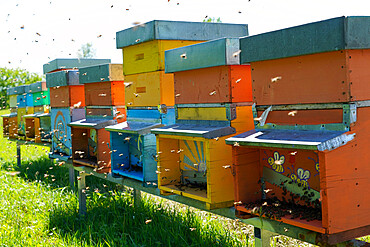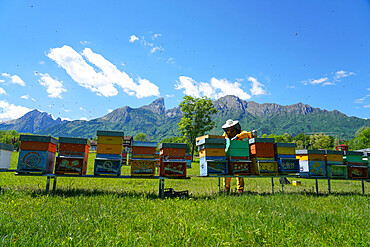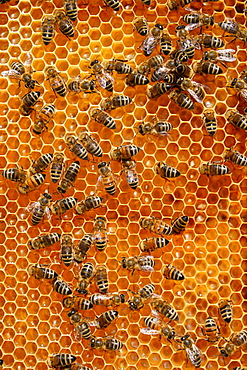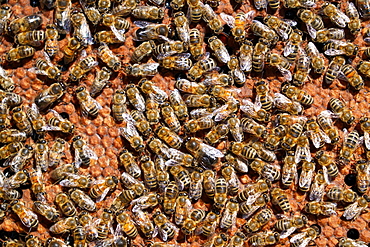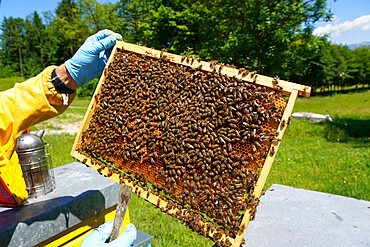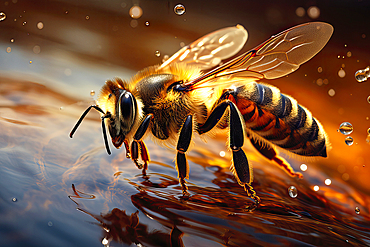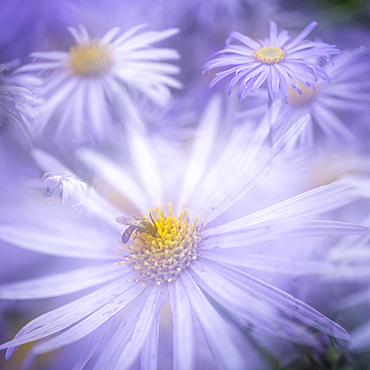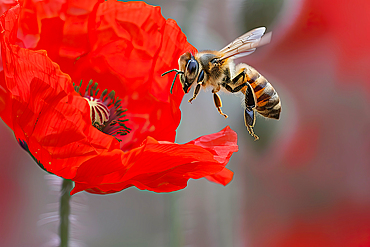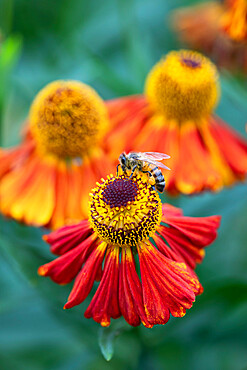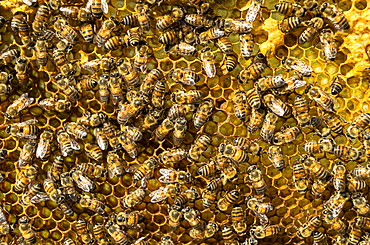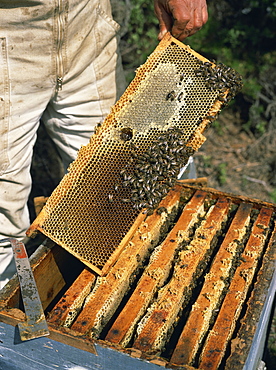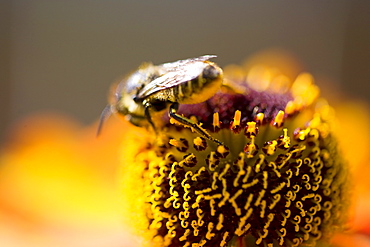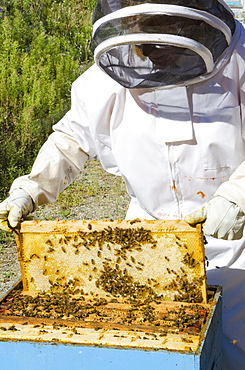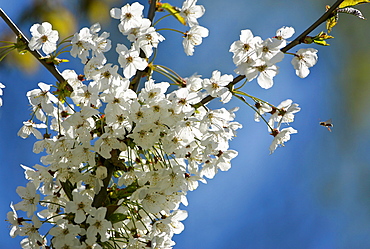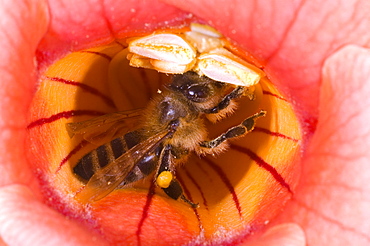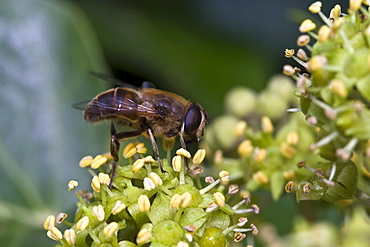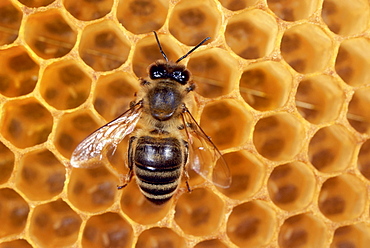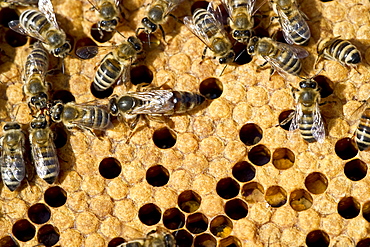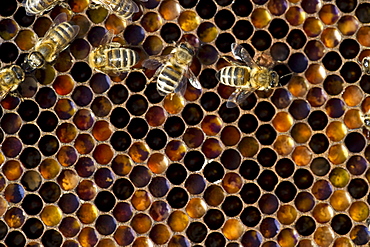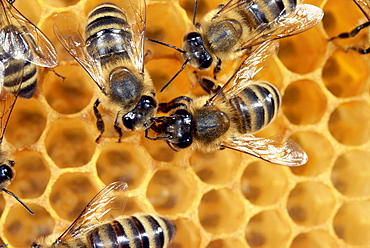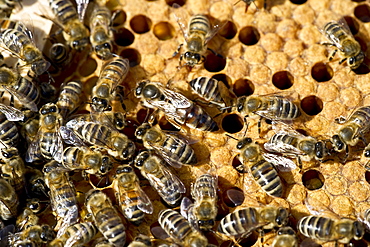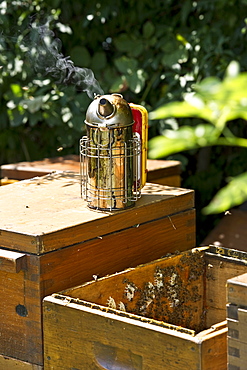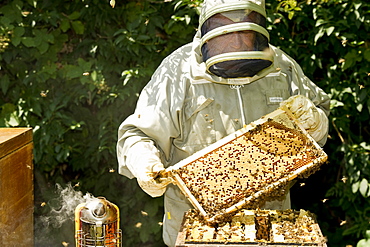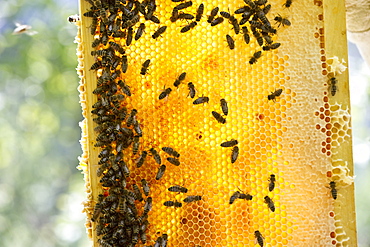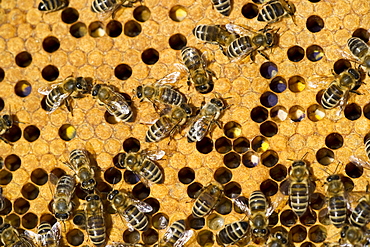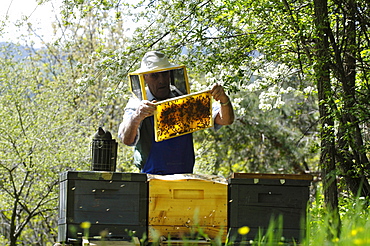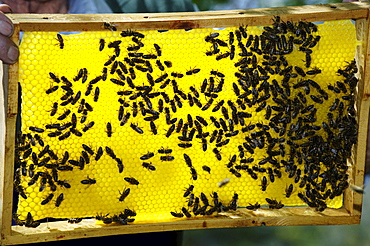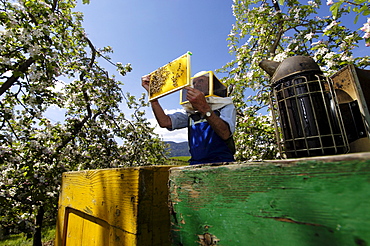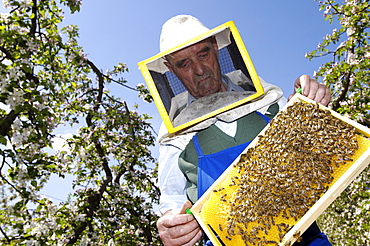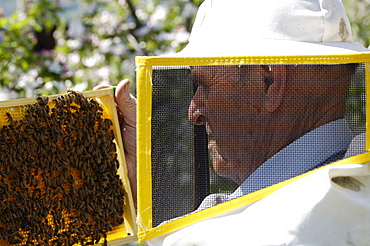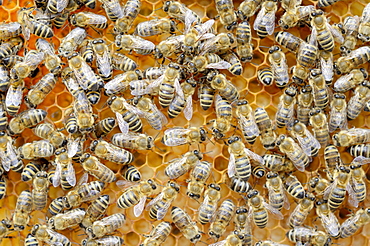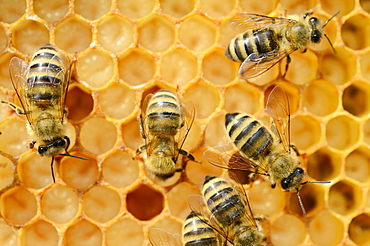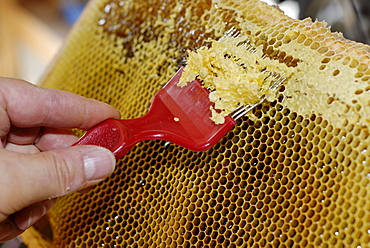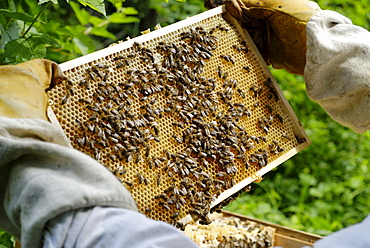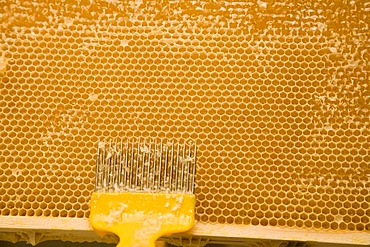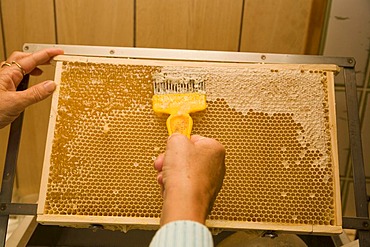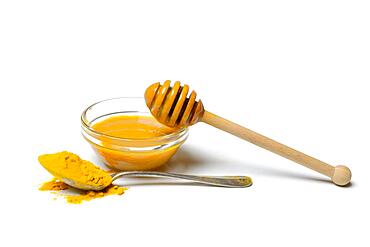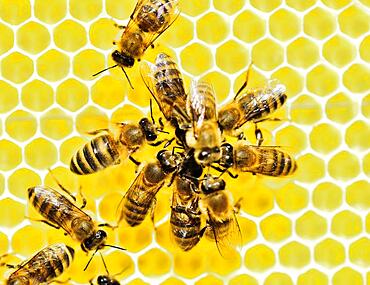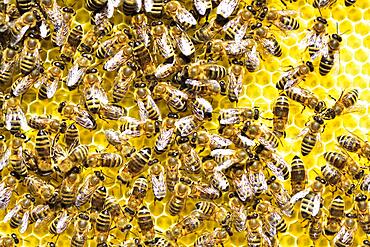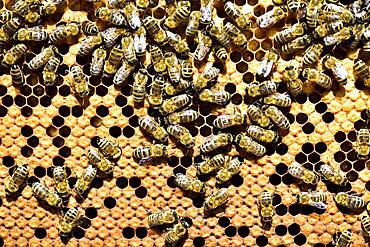Results
29 results found
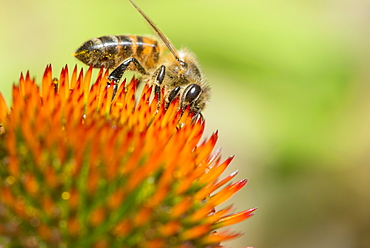
Honey bee (Apis mellifera) feeding on Echinacea sp. (cone flower) nectar, England, United Kingdom, Europe
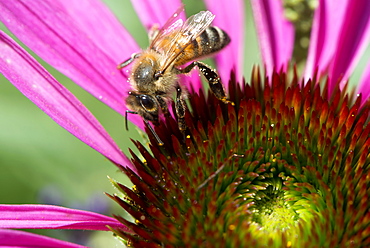
Honey bee, Apis mellifera feeding on Echinacea sp., or cone flower nectar. Honey bees are in trouble in many parts of the world but are doing well in urban areas where their exposure to pesticides, insecticides and fungicides is limited. Photographed in London, UK garden.

Honey bee (Apis mellifera) feeding on Echinacea sp. (cone flower) nectar, England, United Kingdom, Europe
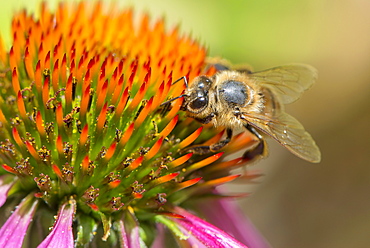
Honey bee (Apis mellifera) feeding on Echinacea sp. (cone flower) nectar, England, United Kingdom, Europe
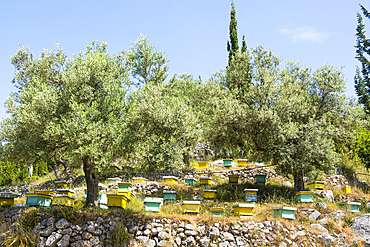
Bee hives set in an olive grove, Llogara National Park, a park centered on the Ceraunian Mountains along the Albanian Riviera in Southwestern Albania, Europe
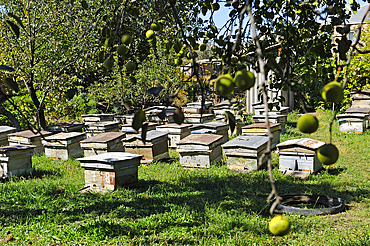
Bee hives in the garden of Raznik Mouradyan, beekeeper at Vedi, a village in Ararat plain, Artashat, Armenia, Eurasia

Honey tasting at Raznik Mouradyan's house, beekeeper at Vedi, a village in Ararat plain, Artashat, Armenia, Eurasia

Phacelia (Phacelia tanacetifolia) in front of ancient beehives in the Beekeeping Museum, Stripeikiai, Aukstaitija National Park, Lithuania, Europe
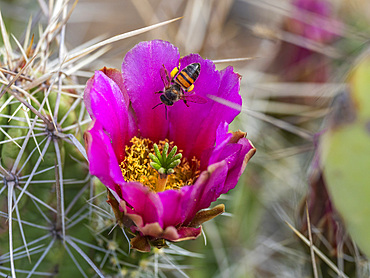
A western honey bee (Apis mellifera), on a strawberry cactus (Echinocereus enneacanthus), Big Bend National Park, Texas, United States of America, North America

Wasp and bee gather pollen from flowering oregano shrub Origanum Laevigatum to make nectar, Dordogne, France
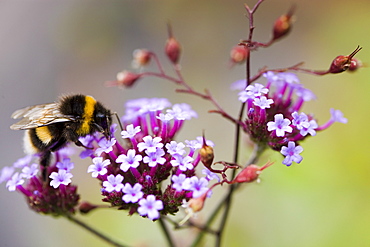
Bumble bee gathering nectar from Verbena bonariensis flower in herbaceous border of country garden, UK
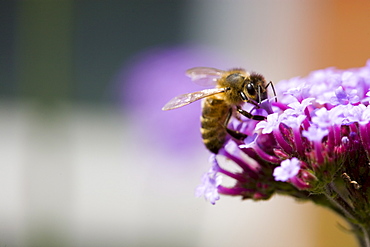
Honey bee gathering nectar from Verbena bonariensis flower in herbaceous border of country garden, UK

A bee with deformed wings as a result of attack by Varoa mites in a beehive in Cockermouth, Cumbria, England, United Kingdom, Europe
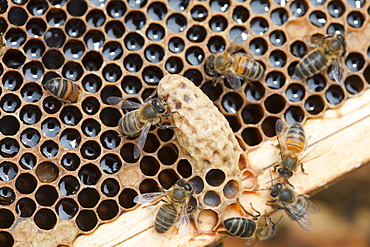
A queen cell in a beehive infected and damaged by the Varoa mite, Cockermouth, Cumbria, England, United Kingdom, Europe

A bee with deformed wings as a result of attack by Varoa mites in a beehive in Cockermouth, Cumbria, England, United Kingdom, Europe

A beehive infected and damaged by the Varoa mite, Cockermouth, Cumbria, England, United Kingdom, Europe

Bees are flying insects closely related to wasps and ants, known for their role in pollination and, in the case of the best-known bee species, the European honey bee, for producing honey and beeswax.

Beekeeper with smoker at wooden beehives, Freiburg im Breisgau, Black Forest, Baden-Wuerttemberg, Germany
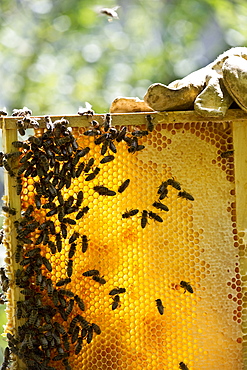
Beekeeper holding honeycombs with bees, Freiburg im Breisgau, Black Forest, Baden-Wuerttemberg, Germany
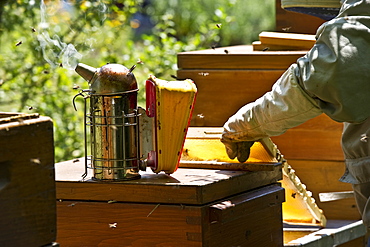
Beekeeper with smoker at wooden beehives, Freiburg im Breisgau, Black Forest, Baden-Wuerttemberg, Germany

Beekeeper with smoker at wooden beehives, Freiburg im Breisgau, Black Forest, Baden-Wuerttemberg, Germany

Beekeeper with honeycomb full of bees in front of blooming tree, Sciliar, Valle Isarco, South Tyrol, Italy, Europe
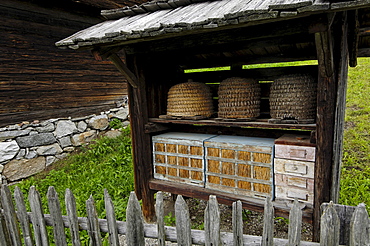
Bee hives in the South Tyrolean local history museum at Dietenheim, Puster Valley, South Tyrol, Italy
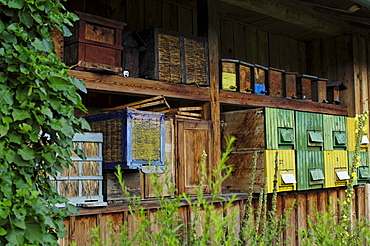
Bee hives in the South Tyrolean local history museum at Dietenheim, Puster Valley, South Tyrol, Italy
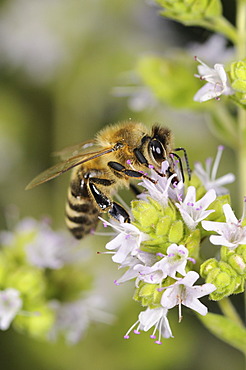
European honey bee or western honey bee (Apis mellifera) on flowering marjoram (Origanum majorana), Germany, Europe
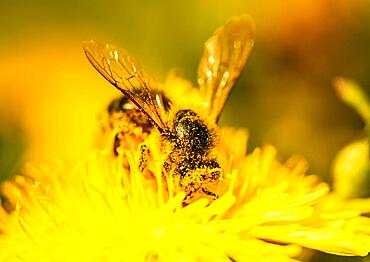
Honey bee covered with yellow pollen collecting nectar from dandelion flower, Important for environment ecology sustainability, Copy space

Honey bees (Apis mellifera), worker bees caring for the brood, on brood cells, larvae, circa 8 days, in honeycomb cells
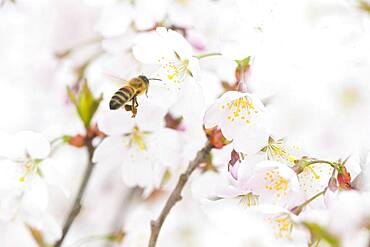
Honey bee (Apis mellifera) in flight in front of cherry blossoms (Prunus serrulata), Emsland, Lower Saxony, Germany, Europe

Beekeeper showing honeycomb, beekeeping in the Amazon rain forest is part of agricultural activity in a settlement of formerly landless peasants, land reform, Entre Rios Province, Mato Grosso, Brazil, South America
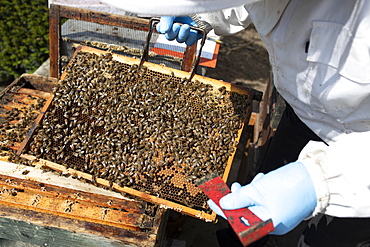
Beekeeper with protective suit controls honeyBees (Apis) on the comb on the stock, North Rhine-Westphalia, Germany, Europe

Honey bee (Apis mellifera) on cherry blossoms (Prunus serrulata), Emsland, Lower Saxony, Germany, Europe
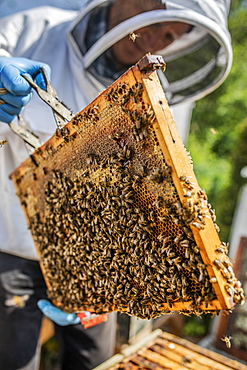
Beekeeper with protective suit checks his honeyBees (Apis) ian der Wabe, North Rhine-Westphalia, Germany, Europe

Beekeeper with protective suit checks his honeyBees (Apis) ian der Wabe, North Rhine-Westphalia, Germany, Europe
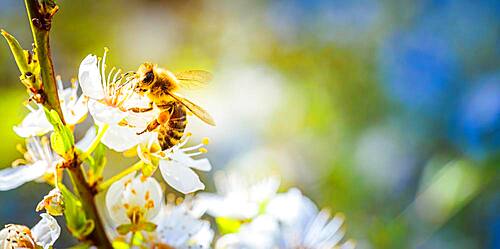
Close-up of a honey bee collecting nectar and pollen on the white flowers of a cherry tree, Austria, Europe

Honey bee (Apis mellifera) on yellow (Echinacea paradoxa) coneflower, Altona, Hamburg, Germany, Europe
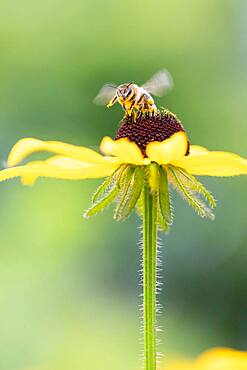
Honey bee (Apis mellifera) on yellow (Echinacea paradoxa) coneflower, Altona, Hamburg, Germany, Europe
